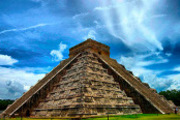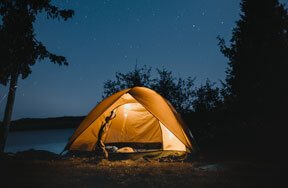Guatemala is home to the latest Survivor castaways for the next 39 days of intense competition. Find out everything you need to know about this country, where volcanoes are the highest and most active, and earthquakes are the most devastating.
Guatemala - Where Is It?
Guatemala is located in Central America, bordering the North Pacific Ocean and the Gulf of Honduras (Caribbean Sea). It's surrounded by Mexico, Belize, Honduras and El Salvador, and is just slightly smaller than Tennessee. The country consists of three main regions - the cool highlands with the heaviest population, the tropical area along the Pacific and Caribbean coasts, and the tropical jungle in the northern lowlands, which is known as the Petén.
Guatemala - A Brief History
During the first millenium A.D., the Maya civilization flourished in Guatemala. After nearly three centuries as a Spanish colony, Guatemala won its independence in 1821, but then experienced many different military and civilian governments, as well as a 36-year guerrilla war, the longest civil war in Latin American history. In 1996, the government signed a peace agreement ending the conflict, which had left more than 100,000 people dead and created over one million refugees.
Guatemala - Survivor Guatemala
In host Jeff Probst's words, the 11th season of Survivor is the toughest one yet. It takes place among the ancient Mayan ruins and ceremonial sites in the harsh jungles of northern Guatemala. The 16 contestants, divided into Nakum and Yaxha tribes, are currently dealing with excruciating triple-digit heat, relentless mosquitoes and crocodile-infested waters as they try to "Outwit, Outplay and Outlast" each other in hopes of winning the $1 million prize. Stay tuned to see who takes the ultimate Survivor title this season!
Guatemala - Did U Know?
- The country's official name is the Republic of Guatemala.
- Guatemalan currency is the Quetzal (Q).
- Though the official language is Spanish, it's not universally understood among the indigenous population, who still speak various Mayan languages.
































